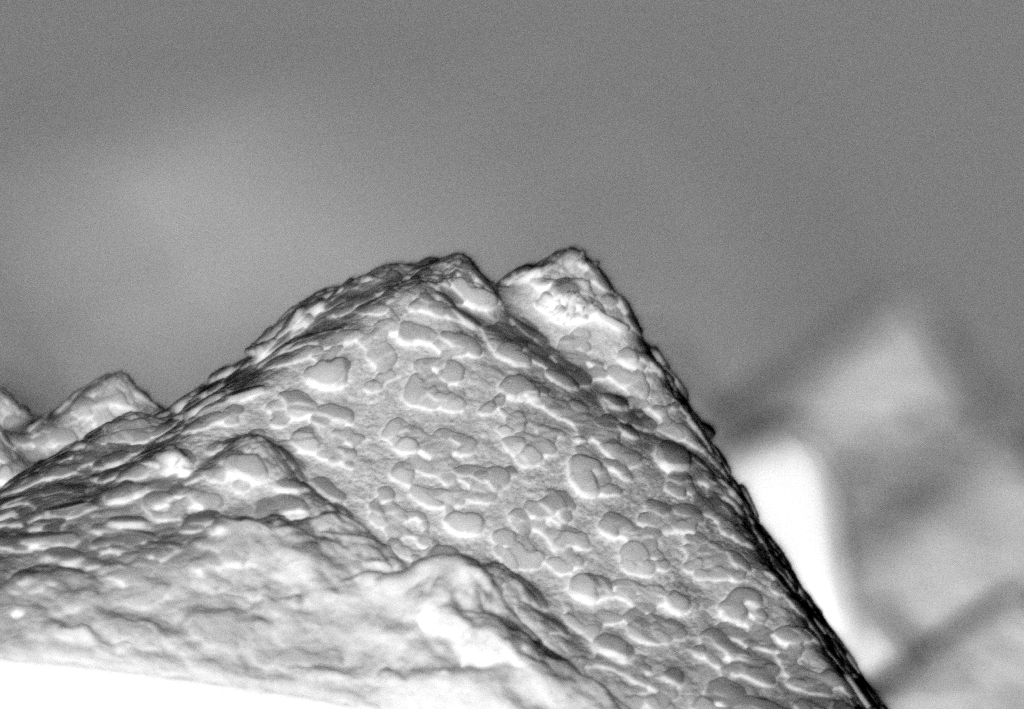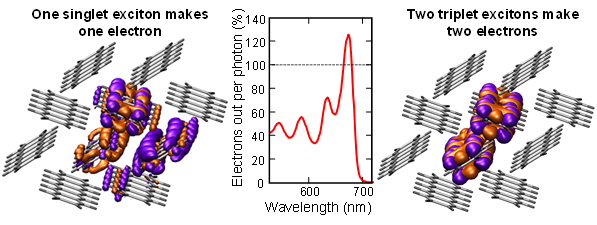Research: Solar Cells
We believe that the best way to reduce the cost of photovoltaic (PV) energy is to improve efficiencies. This reduces both the cost of the solar cell per Watt generated, as well as reducing the installation cost, since fewer cells are required.
We seek to complement traditional silicon solar cells with new technology that uses excitons to mediate the flow of energy. Mastering the properties of excitons offers the ability to guide energy at the nanoscale, and transform it with a flexibility that is impossible in conventional systems. For example, excitons have no net charge and can be split or combined. As an example, we have exploited this flexibility by using singlet exciton fission to generate multiple carriers in an organic solar cell at an efficiency of > 1.26 electrons per photon, exceeding the unity limit in conventional electronic materials. The spintronics of excitons is key to our work. Indeed, the high efficiencies of singlet exciton fission arise because competing thermalization losses are spin disallowed.
Coupling excitonic materials to silicon, however, presents two important challenges. First, how can energy be communicated from excitons to silicon? Second, can silicon technologies efficiently collect that energy and convert it into charge?
Our approach is to directly couple materials that perform singlet exciton fission with silicon. The excitonic materials absorb light in the visible spectrum and split the energy into two spin 1, or triplet, excited states. In 2019, we observed evidence that these triplet excited states could be coupled to silicon surfaces across a thin (~ 1nm) interfacial layer of hafnium oxynitride (link). More recently, we determined that the coupling was caused by separation of the triplet excited states into charge at defect states in the hafnium oxynitride (link).
We are presently engineering interfaces to control energy transfer by introducing states to mediate interfacial charge separation. This approach has led to the first example of successful coupling of singlet exciton fission to silicon solar cells (link).


Figure: SEM images of singlet exciton fission coupled silicon solar cells
Outlook
By generating twice the current from the visible spectrum, exciton fission can increase the efficiency of silicon cells beyond their conventional ‘single junction efficiency limit’. Unlike other approaches, that require coupling a second solar cell to silicon, exciton fission preserves the simplicity of single junction silicon cells, promising a low-cost and readily-manufacturable path for the continued scaling of solar energy.

Figure: Unlike electrons, excitons can be split. In the Center for Excitonics, we have used singlet exciton fission in pentacene to generate at least 1.26 electrons per photon. From Baldo, Van Voorhis, et al. Science (2013) and APL (2013)
